10 Must-See Attractions in Madrid
 |
| Madrid Overview. photo from telegraph.co.uk |
The capital and the largest city in Spain, Madrid is considered by many as one of the most stunning and breathtakingly beautiful cities in the world. Its ornate buildings are second to none, and its history is so colorful, the city almost always figures very high in the bucket list of most travelers.
I was a wide-eyed 19 year old when I first dreamed of seeing Madrid.
I was young, idealistic and romantic. I see the glass half full and I couldn’t wait to see the world and all its possibilities. I enrolled in a basic Spanish class confident that I would be able to use it as soon as I am able to travel the world, and I expected that to happen right after graduation. I learned my Spanish verbs and their conjugations, while getting a crash course on the history, culture and geography of Spain.
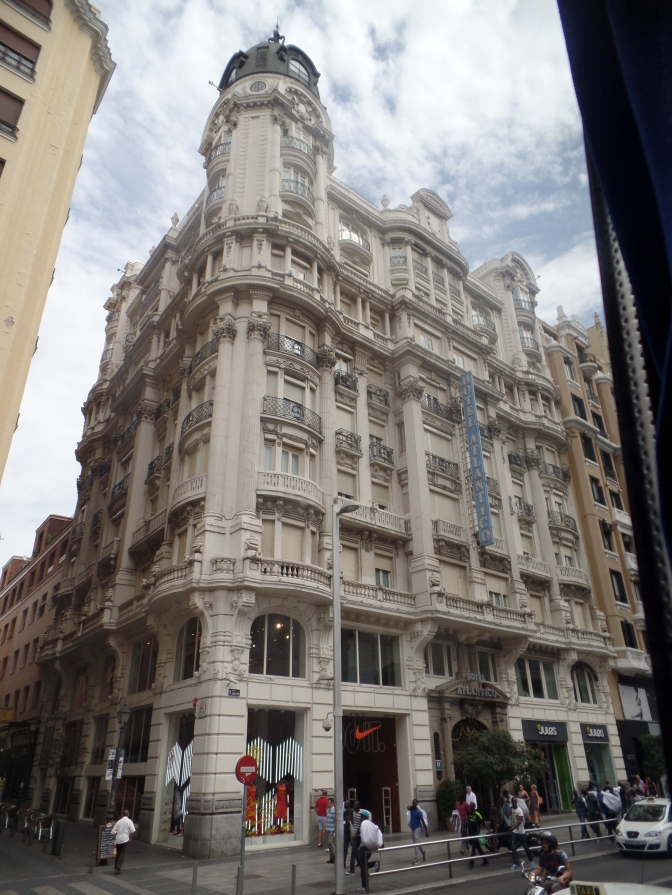
Unfortunately, life happened and my plans of traveling all over Europe fell through. I put in on hold until suddenly, I woke up and a decade has passed and that dream still hasn’t materialized.
But as it usually does, life has a way of bringing back what was once lost to you. In a welcome twist of fate, I was able to come visit Madrid recently and with it came the realization that my love and fascination of the motherland (The Philippines was colonized by Spain for 333 years) remains intact.
I spent three days in Madrid during my stay. Though it was indeed short and not enough time to get a full grasp of the everyday life in the city, it allowed me to at least discover some of the highlights the city has to offer.
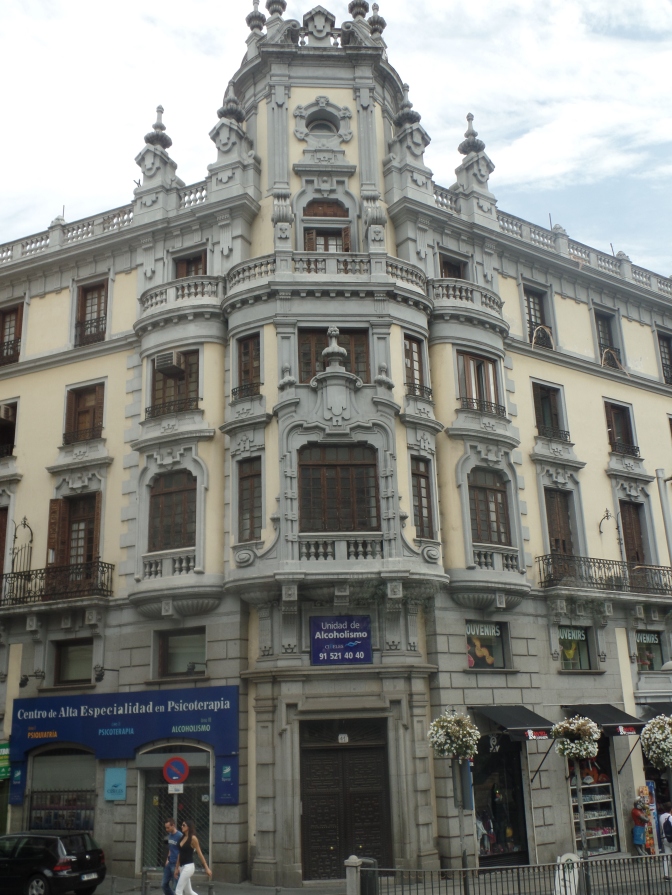
Gran Via
Constructed by Spanish urban planners in the early 1900’s, the Grand Via is a long stretch of street in central Madrid. Lined up with shops, clubs, tapas bars, restaurants, hotels for all budget, and malls, it is widely known as the street that never sleeps and it has become a major tourist spot in the city, thanks in part to the eclectic mix of architecture sported by the many buildings such as Art Deco and Neo Mudejar and Plateresque.
It helps that this thoroughfare is a walking distance to some of the most important Madrid attractions.
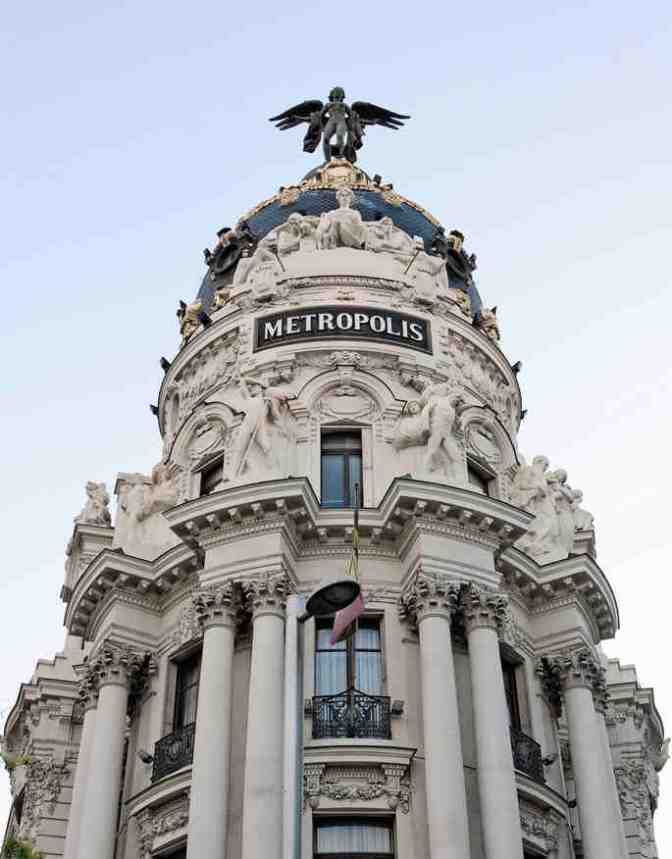
Edificio Metropolis
Some of the most recognizable buildings along the Gran Via is the 1911-built Edificio Metropolis, located at the corner of Calle Alcala. This French-inspired building is most famous because of winged goddess of victory that adorns its rooftop. In fact, make a quick image search of Gran Via and chances are the building are prominently featured in most of them. The best vantage point to take photos of the street is at the Círculo de Bellas Artes
Fundacion Telefonica
Another famous building along Gran Via is the Fundacion Telefonica. it was one of the tallest buildings in Europe during its completion in 1929. History books say that this building was instrumental in guiding the French troops into the city during the Civil War. The clock at the top was used by Franco’s troops during the Civil War to help guide bullets into the city. Today, it is a contemporary arts foundation with an excellent, free gallery.
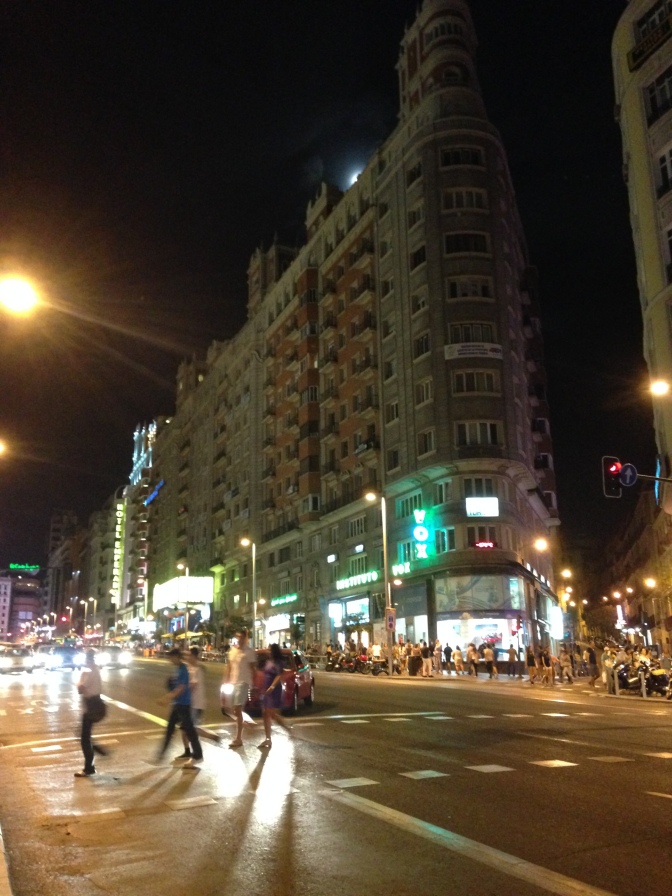
Museo Chicote
If you are a fan of English literature, then you’ll have a great time drinking cerveza or cocktails at the Museo Chicote. This Art-deco designed bar was a former haunt of Ernest Hemingway in the 1930s. Grace Kelly was even said to have visited this cocktail bar during its heyday.
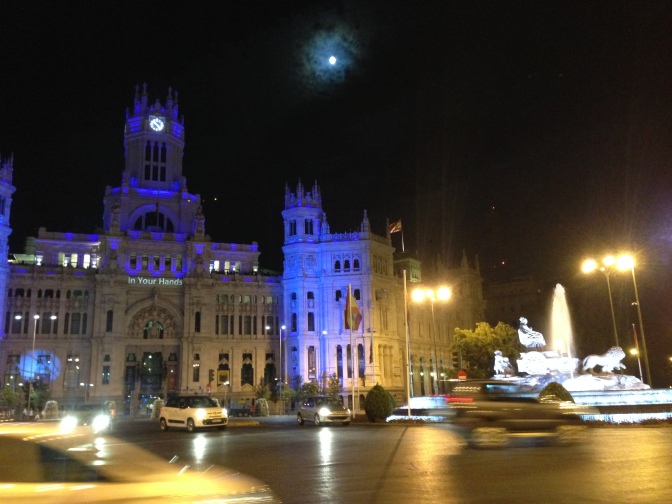
Plaza Cibeles
From the Atocha train station, I traveled by coach bus to Gran Via and one of the first things that caught my attention is the majestic Plaza Cibeles. One of the grandest rotundas in Madrid, it is adorned by the 18th century Fuente de Cibeles named after the Greco-Roman goddess of fertility, Cybele. Cybele is also acknowledged as the Great mother of the Gods. The Plaza is surrounded by Neo-Classica buildings such as the white Palacio de Comunicaciones.
Barrio de las Letras,
In the 16th to 17th century, some of most prolific writers lived in the Barrio de la Las Letras or District of Letters, an area located east of the Plaza de Santa Ana. One of the most famous writers who lived in Madrid was Miguel de Cervantes de Saavedra, the author of the Don Quijote. Another literary landmark is the Casa de Lope de Vega , the former home of Lope de Vega (1562–1635), Spain’s premier playwright. It’s now a museum containing memorabilia from Lope de Vega’s life and work.
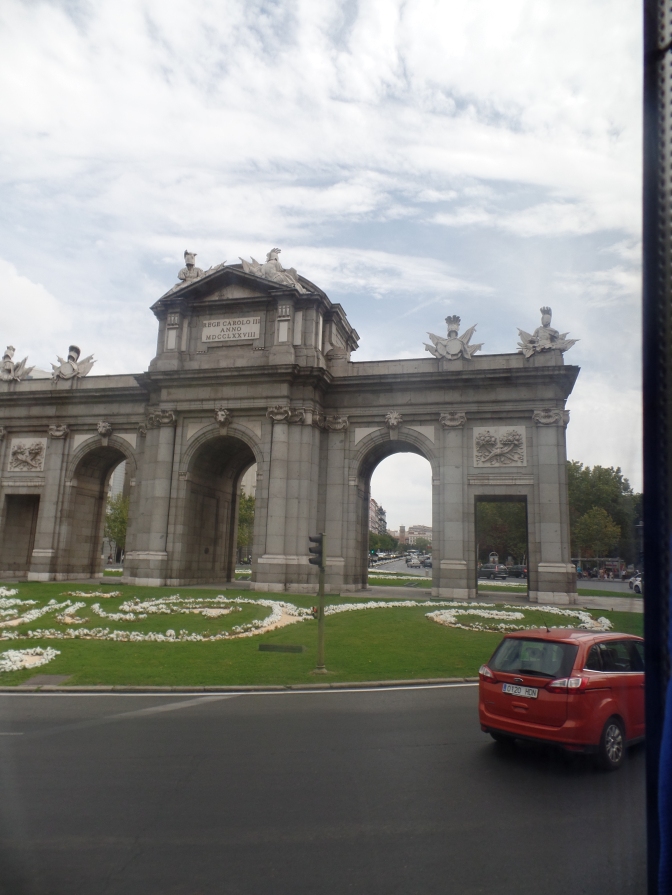
Puerta de Alcala
Completed in 1769, the Puerta de Alcala stands at Plaza de la Independencia in Madrid. It was designed by Italian architect, Francisco Sabatini. It is in the middle of Calle de Alcalá, one of the oldest streets in Madrid, and which runs from the Puerta del Sol in the city centre outwards to the town of Alcalá de Henares, lying to the northeast of the city. it is adorned by six statues by Spanish sculptors Francisco Gutiérrez and Roberto Michel. The raised central part at the gate’s highest point has a plaque, which reads: “REGE CARLO III ANNO MDCCLXXVIII.” This commemorates the date of the gate’s inauguration by King Carlos III.
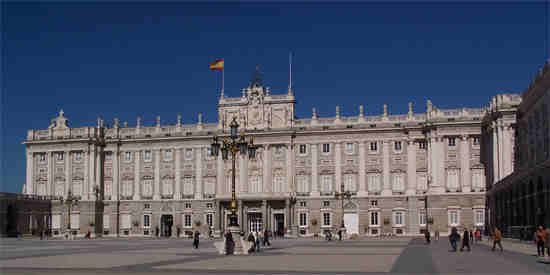
Royal Palace
One of the biggest palaces in Europe, Madrid’s Royal Palace boasts of 2,500 ornately decorated rooms. This 18th century edifice was the official royal residence for the Spanish monarchy dating back to Carlos III. The last royals to reside there were Alfonso XIII and Victoria Eugenie in the early 1900s. About 50 rooms are open to the public, including an armory, pharmacy and the palace’s lavish throne room, or “Salón del Trono,” which features a ceiling painted by the Baroque artist Tiepolo. A fresco in the grand dining hall depicts Christopher Columbus presenting gifts from the New World to King Ferdinand and Queen Isabella.
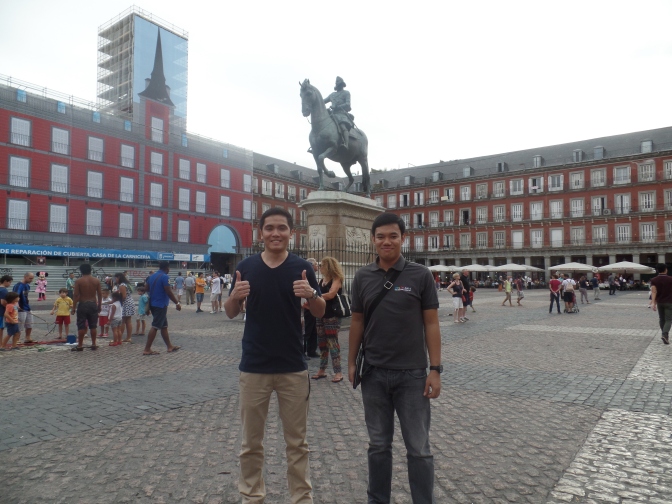
Plaza Mayor
If you ever get the chance to visit Madrid, you can’t ever miss Plaza Mayor. One of the most impressive and photographed plazas in the city, it dates back to 1619. It has had a very dark past, hosting bullfights and beheadings of accused heretics during the Spanish inquisition. Three sides of the rectangular cobblestone plaza are bordered by 18th century 3-storey apartments. The center piece of the plaza is a statue of Philip III on horseback.
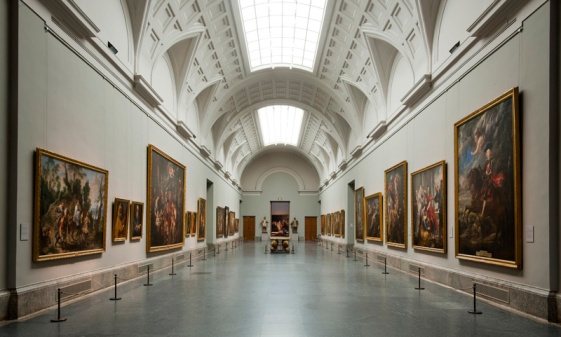
The Museum Triangle
Madrid is a great city for arts enthusiasts. In this city, you will find a triangle of museums that house both ancient and contemporary works of art. Located along Paseo del Prado, you will find the Museo del Prado, the Thyssen-Bornemisza private museum and the Reina Sofia, Madrid’s modern art museum. One of the finest art collections in the world and the best collection of classical art in Madrid, the Museo del Prado features works from renowned artists from Spain, Italy, Netherlands and Belgium. You can find here works of El Greco, Rubens, van Dyck, and Brueghel, Botticelli, Caravaggio and Albrecht Dürer among others. The Prado Museum currently offers free entry Monday to Saturday, 6pm to 8pm, and Sundays and holidays from 5pm to 7pm. Meanwhile, the Reina Sofia boasts of many contemporary art masterpieces including those of Pablo Picasso and Salvador Dali.
Madrid is an undeniably picturesque city that has everything for everyone. It is a city full of life, color and beauty.
If you have the means to do it, I recommend that you visit Madrid at least once. It will be a feast to the sense, that I can guarantee.
















0 comments:
Post a Comment